
If you’ve ever been concerned about why your ceramic glass stovetop looks cloudy, and are looking for answers on how to clean it, then this article is perfect for you!
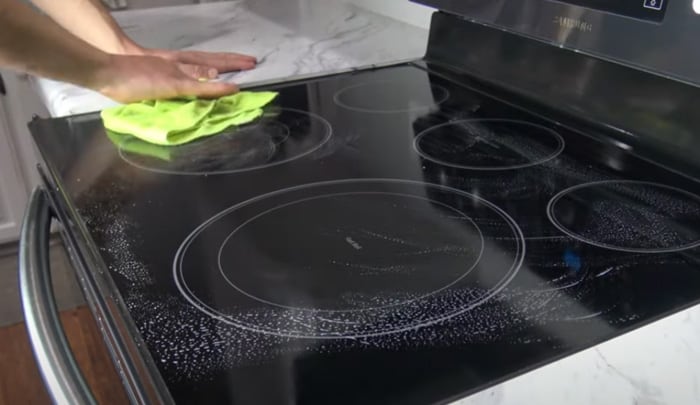
Did you know that majority of the stains are actually the result of food remnants, or it could be the result of magnesium and calcium mineral deposits caused by hard water? Where does this hard water come from? It is due to the damp bottom of your cooking cutlery that reacts with the heat of your stovetop. Another reason for these cloudy rings can also be due to either spillage of food or excessive water spillage from the overboiling pots and pans.
Your stove top will form a natural cloudiness with time and use. Things simply wear down as they get older, they will show discoloration and haze. You can extend the life of your glass cooktop with regular maintenance if you take care of spills, spots and streaks. There are many different options, such as ammonia, magic eraser or citric acid. The best one will depend entirely on your glass stove top. If you’re looking for alternatives, you might consider vinegar-free methods to clean kitchen appliances, which can be gentler on certain surfaces will form a natural cloudiness with time and use. Things simply wear down as they get older, they will show discoloration and haze. You can extend the life of your glass cooktop with regular maintenance if you take care of spills, spots and streaks. There are some many different options, such as ammonia, magic eraser or citric acid. The best one will depend entirely on your glass stove top.
Of course, there are also many other reasons, such as melted food items stuck at the bottom of your cookery that melts onto your glass top stove when it is heated. All in all, a cloudy glass top stove isn’t the prettiest sight, and hence you may be looking for ways to get rid of it. This article will provide you with the four easy ways to clean your cloudy glass top stove that can even be used for other kitchen appliances like faucets, so if you are looking for answers, read below for more!
Prepping the Stove Top
So, how do you clean a cloudy glass top stove? When it comes to prepping the cleaning of your stovetop, you should use dishwashing liquid, especially on the areas that contain the most obvious stains. After that, pour 1 tablespoon of baking soda over the dishwashing liquid and let it rest. The special ingredient is using two tablespoons of citric acid powder, mix it in hot water and then spray it over the mixture of baking soda and dishwashing liquid. When you see the bubbles forming, that’s when you know it’s working. You can spread it all around the glass top stove, and let it rest for 20 to 30 minutes. Then, use a sponge or cloth to rub the entire mixture into the glass top stove in a circular function. After this period of time, you can then wipe away the remaining mixture using your cloth and rinse it off with warm water. To finish it all off, use the newspapers to polish the stovetop.
Be careful with the items that you use to remove a stain. Some brushes can damage delicate materials. You could be sensitive to a strong chemical solution. Sometimes you don’t need glass cleaners, for example, water spots can be removed with paper towels or eve a newspaper.
The process will be different depending on the causes of the stains, always read the instructions provided by the manufacturer. They will tell you how to avoid issues and the risk of permanent damage.
The same goes for your sponges, pads and cookware. Having the right tools will add an extra layer of tidiness. Always have a towel dedicated to your glass top area to avoid grime formation and to remove water stains quickly.
To effectively clean a cloud stove top you can choose between 4 different methods: baking soda, vinegar, a commercial stove cleaner or a sharp razor. It is better if you can combine two or more of these alternatives. Whatever method you choose, make sure to clean thoroughly before using the stove again or the chemicals can have a negative reaction with the heat.
Baking soda and white vinegar in a spray bottle
Another technique is to add baking soda and white vinegar together. You can pour the white vinegar into a spray bottle, and prepare a side bowl of warm water with a few added drops of dish soap. Before you spray it onto the stovetop, wipe and remove any food remnants, Pour 1 tablespoon of the baking soda onto the surface, and ensure that it fully covers the stovetop. Then, use the spray bottle containing the white vinegar and spray it onto the stovetop. You will start to notice fizzing, and this shows that the reaction is occurring. After that, take a microfiber cloth and soak it in the bowl of warm water that you prepared beforehand, and wait for about 15 minutes before wiping it away using the damp cloth. This method is similar to cleaning shower tiles without scrubbing, where gentle solutions and patience can yield great results and soak it in the bowl of warm water that you prepared beforehand, and wait for about 15 minutes before wiping it away using the damp cloth.
Commercial cleaners for glass top stoves
If you do not have the time to create your own mixture of cleaners, then take a look at the best commercial stovetop cleaners on the market at the moment. At the top of the list, the best overall stovetop cleaner you can probably find now is EZ Brite Glass and Ceramic Cooktop Cleaner & Conditioner. There are also specific cleaners that come in different forms, which you can use to tailor to your needs. If you are looking for a paste, give Weiman Cooktop Max Cleaner & Polish a try. But if wipes are what you’re after, try the Affresh Cooktop Cleaning Wipes. Affresh also contains its own Cleaning Kit, so if that is what you’re after, go check it out. One of the best glass stovetop cleaners, which prides itself on leaving no residue is the Carbona Ceramic Cooktop Cleaner. You can also apply a good mold remover if that is the case.
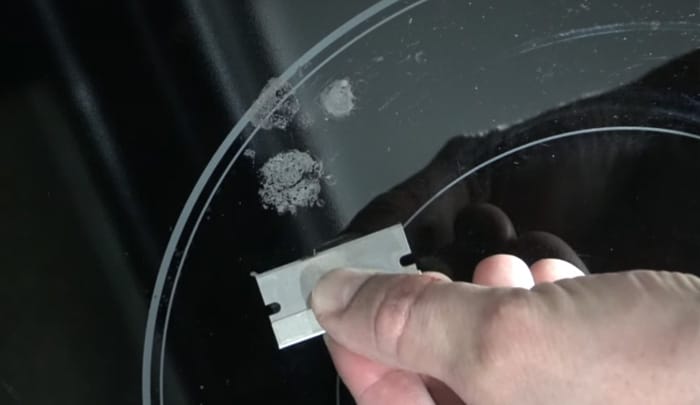
Removing stubborn stains
If you have stubborn stains on your stovetop that you really want to get rid of, then here are some of the best tips we have to help with that. Firstly, wipe the stovetop! Make sure that it is cooled down before you clean it to ensure that you don’t burn yourself. Not only is cleaning on a hot glass top stove dangerous, but the cleaners may also react with the heat, causing further damage to the finish on your stovetop. By wiping off any residual food, it prevents grease from reacting with the cleaner.
Next, if you have a silicone spatula, it can be useful to remove any black marks and stains. Try rubbing the silicone spatula in a circular rotation when the stovetop has cooled down.
As mentioned earlier, baking soda and vinegar go hand in hand when it comes to removing stains from glass stovetop surfaces. Certain chemical cleaners would cause residue to burn once the stovetop is heated, but baking soda and vinegar do not do that. This cleaning duo is versatile and can be used for various household tasks, such as cleaning a shower head without vinegar if you prefer alternatives.
Another way to remove the stubborn stains is to use a razor and scrape off the solid residue that does not come off easily with various cleaning products. However, ensure that you use your razor carefully, as you don’t want to risk scratching the glass surface.
Cleaning glass stovetop burns
Removing burnt food from your stovetop should definitely be a priority after you are done cooking. When trying to clean these burns, you should ensure to use nonabrasive substances such as toothpaste or vinegar. Toothpaste contains baking soda, which is perfect for use when it comes to the removal of difficult stains. These gentle cleaning methods are also effective when cleaning ceramic properly, ensuring you don’t damage delicate surfaces. After you are done, wipe off the residua using a damp microfiber cloth. As mentioned multiple times in the article, vinegar is one of the best ingredients for removing stains, so that is always an option!
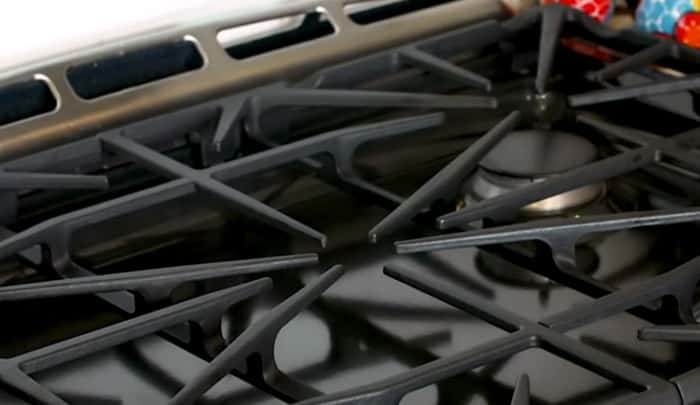
Take note of these steps to remove stains and scratches
With that, we have provided you with the four different ways in which you can clean a cloudy glass top stove. We hope that this has been helpful for you if you were previously struggling with a cloudy glass top stove!
You should also consider improving your cooking skills in general. Sometimes the wrong motion with your pots can generate spills on your stove tops. It is a good idea to learn new techniques that will also benefit the rest of your kitchen in the long run. While focusing on your stovetop, don’t forget about the rest of your kitchen floor. You might be interested in learning how to clean floors without a mop for a comprehensive kitchen cleaning routine.
“When cleaning glass top stoves, it’s easy to accidentally cause damage if you’re not careful. First, always avoid abrasive cleaners, they can create micro-scratches that will cloud your surface over time. Second, remember to use the right tools – soft cloths and plastic scrapers can help you clean effectively without risking any harm. Having spent 30 years dealing with all sorts of kitchen appliances, trust me when I say prevention is always better than cure.”
Jordan Raphaelson, Professional Cleaning Expert
References
https://www.winnings.com.au/blog/choose-the-best-cooktop
https://www.realhomes.com/buying-guides/best-cleaning-products

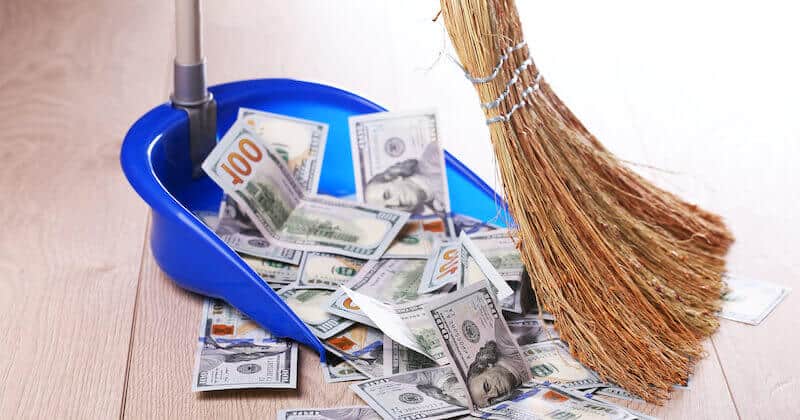
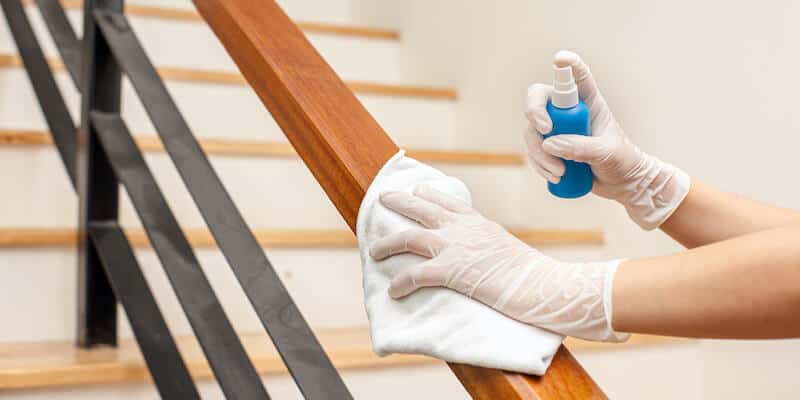
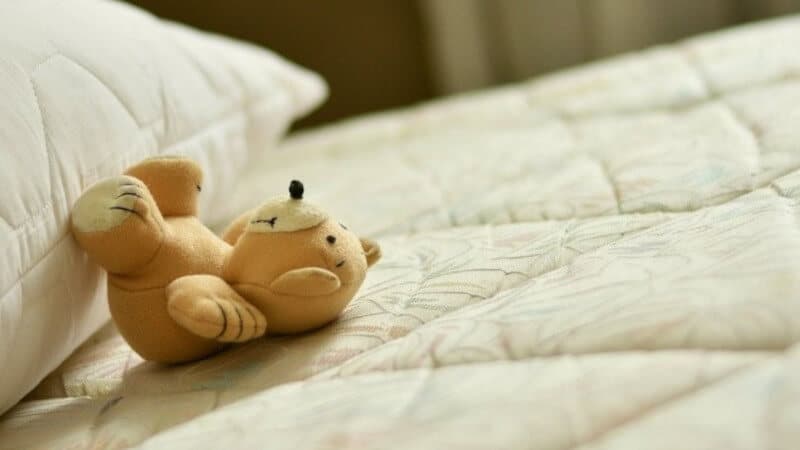

From my own experience, those cloudy stains are primarily due to hard water. Trust me, it’s a constant haggle! The damp bottom of pans, especially after boiling water for pasta or potatoes, is a notorious culprit. Aside from commercially available cleaners, I often use a mixture of vinegar and baking soda, which works like a charm for me!
That cloudy appearance you’re seeing, Dowdy, isn’t solely from the hard water – sure, it contributes, but there are other factors too. One of the major causes I’ve noticed, especially in a professional kitchen, are the high-fat content foods – when they burn and crystalize on the surface, it’s a nightmare to clean and can easily create that cloudy effect.
I adhere to using non-abrasive cleaners for my ceramic stovetop, but when faced with stubborn burn marks from high-fat foods, a paste of baking soda and vinegar works wonders without causing any damage.
It’s like maintaining an old car engine; regular cleaning is crucial but using incorrect or harsh materials can do more damage than good.
Remember the principle of ‘Like dissolves Like’; vinegar’s acidity is perfect for dissolving mineral deposits, but caution against using anything abrasive or caustic on ceramic tops.
In my years of keeping a ceramic stove top spotless, I’ve found that cosmetic sponges work amazingly in tandem with vinegar. This method is both non-abrasive and effective, allowing you to gently lift away stubborn deposits without scraping or scratching the surface.
Certainly agree with you there, Veronica. In the realm of stovetop cleanliness, I like to see it as taking care of my favorite vinyl record; you wouldn’t let scratches or dust build up, would you? Using a soft cloth with baking soda paste not only cleans but also polishes the surface like audio enthusiasts do with their treasured record collections. With this method, we could bring back the neatness and shine without running the risk of scratching our precious ‘records.’
I second that, Pennington! Don’t underestimate the power of baking soda either for scrubbing off grimy surfaces or for extinguishing small kitchen fires—it’s indeed like the Swiss Army knife in our cleaning armory.